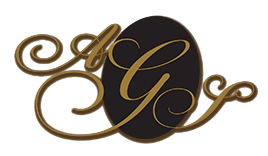When the temporomandibular joint functions incorrectly, TMJ or TMD disorders develop. TMJ is a painful condition that produces a wide range of symptoms and complications. Due to the temporomandibular joint and adjoining muscles functioning incorrectly, the jaw doesn’t move properly. As a result, the movement of the jaw can become difficult. The incorrect functions and movement add strain to the joint, further enhancing the severity of the symptoms. With TMJ treatment in Sacramento, you can relieve the discomfort and improve the function of the jaw using an advancement in dentistry. With neuromuscular dentistry, Dr. Scott Grivas will realign the jaw to stop the discomfort.
Symptoms of TMJ
There are numerous causes of TMJ; however, no matter the cause, a diversity of symptoms develops. Often, there is pain, discomfort, tenderness and even swelling of the jaw. For many, the jaw movement becomes limited and the jaw may even lock into an opened or closed position. It’s not uncommon to experience popping, grinding, or clicking in the joint. In some cases, headaches, neck and shoulder pain, and even earaches can develop. As time goes on, untreated TMJ can drastically decrease quality of life as eating, speaking, and even yawning become more challenging.
TMJ Treatment in Sacramento
To relieve the pain and discomfort of TMJ, Dr. Grivas offers an advanced treatment using neuromuscular dentistry. Neuromuscular dentistry is all the craze right now in TMJ treatment because it’s simple and effective. Neuromuscular dentistry involves realigning the bite to stop the symptoms of the disorder. Using specialized techniques and a comprehensive treatment plan, the jaw is realigned into the optimal position.
Traditional TMJ treatment only involves evaluating the teeth, bones, and gums. Neuromuscular dentistry on the other hand goes a step further to also evaluate the relationship between hard and soft tissues, muscles, and nerves. By doing so, the dentist is able to ensure these areas all work in harmony to increase the function of the joint.
Using state-of-the-art technology, the movement and function of the bite is evaluated. Using computer and tracking instruments, a treatment plan is developed by determining how to create the ideal jaw movement, resting position, and path of closure. Electromyography is used to help measure the jaw’s muscle functions in various positions and how the jaw and skull relate to one another. Sonography is used to record jaw sounds to easier detect abnormalities. Often, x-rays or other images are taken to help evaluate the condition of the joint. Dr. Grivas uses a TENS unit to send electrical signals to the jaw muscles to allow them to work better. Combining all of the diagnostic methods allows for a comprehensive treatment plan to be developed to restore structural balance.
Your Neuromuscular Dentist in Sacramento
Dr. Scott Grivas not only offers TMJ treatment, but is also a neuromuscular dentist in Sacramento. Using the most advanced dental technologies, he creates a customized treatment plan to restore the function of the jaw. By realigning the jaw to ensure the prober bite, this provides a long-term solution to treat the painful condition. Let Dr. Grivas stop the pain with neuromuscular dentistry.
